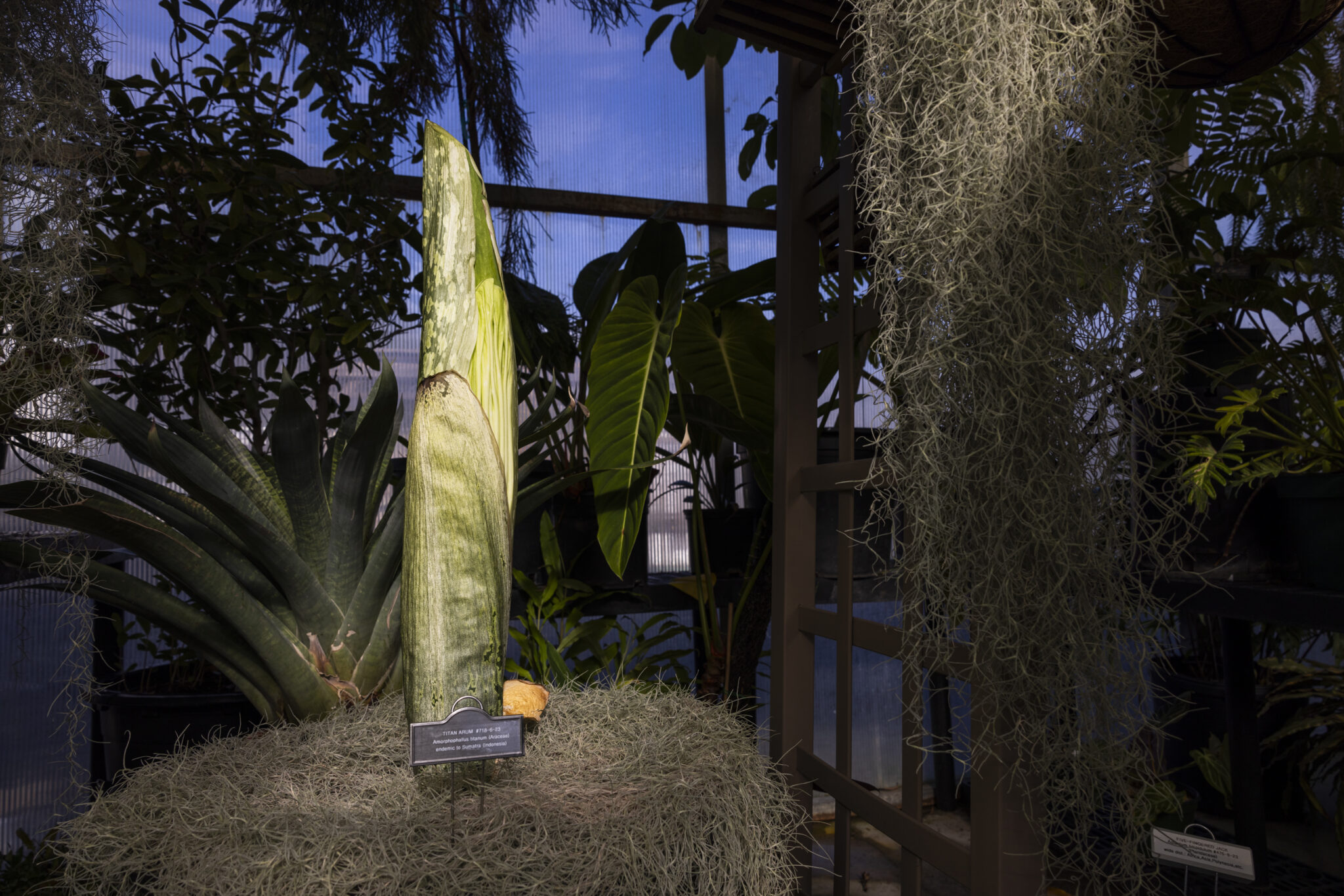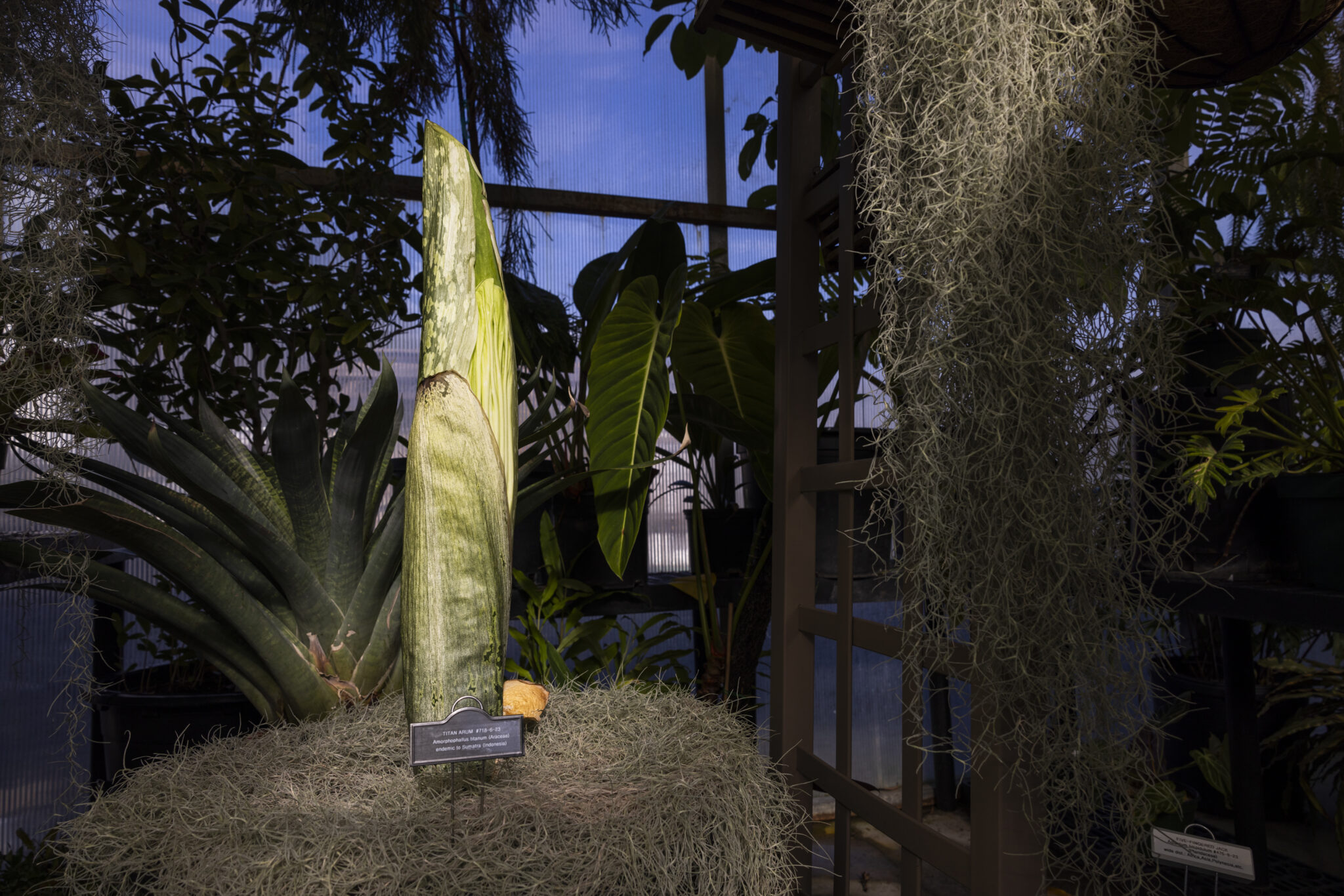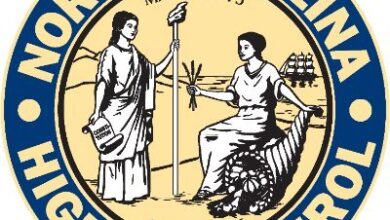
Last Updated on November 15, 2023 1:32 pm
BOONE, N.C. — Appalachian State University’s titan arum, or “corpse flower,” is expected to bloom this week at the Department of Biology’s Greenhouse. The bloom will be the plant’s first since it arrived in Boone over a decade ago.
Native to the Indonesian island of Sumatra, the titan arum, formally Amorphophallus titanum, is the world’s largest unbranched inflorescence — a floral structure composed of many smaller flowers. Commonly referred to as a “corpse flower,” a blooming titan arum emits a powerful stench that attracts pollinators like flies and carrion beetles.
The blooming is an exciting event because most corpse flowers require seven to 10 years to produce their first blooms. Once the titan arum reaches maturity, it has an unpredictable blooming cycle, typically blooming once every few years. The average bloom lasts only two to three days with the peak growth — and odor — occurring at night into early morning.
In 2018, the International Union for Conservation of Nature listed the titan arum as endangered, estimating that only 1,000 plants remain in the wild due to the destruction of native forest habitat. Given their rare status and infamous aroma, the corpse flower is a popular attraction at many conservatories across the United States.
App State’s corpse flower is named “Mongo” after Jerry Meyer, who has served as the Greenhouse manager for 14 years. In high school, Meyer’s band director nicknamed Meyer “Mongo Jerry” after the 1970s British rock group Mungo Jerry, and the nickname stuck. A veteran of both the U.S. Air Force and Marines, Meyer brings strict discipline, tight organization and a healthy passion for plants to his role in the Greenhouse’s conservatory.
Mongo came to App State in 2011 as a generous gift from the Atlanta Botanical Garden, through a connection with one of the Greenhouse’s longtime community volunteers, Chad Wunderlich. The plant arrived as a fist-sized corm — a swollen underground stem resembling a potato — in 2011, and has grown to weigh 30 pounds with a diameter of 18 inches.
On Nov. 3, Wunderlich and Meyer noticed the outer covering of the plant, called the spathe, beginning to unfurl and alerted the Department of Biology. When asked about when the bloom can be expected, Meyer responded, “At the moment, I’m thinking Tuesday to Thursday of next week, but it’s a first for us, too.”
The Department of Biology’s Greenhouse houses over 1,400 species from around the world, and Mongo is just one of over 100 species in the facility’s collection that are considered threatened in their natural habitats. Mongo will be moved to the new Conservatory for Biodiversity Education and Research at App State’s Innovation District upon completion, anticipated in 2025.
During the bloom, Greenhouse staff will share updates on the Greenhouse Facebook and Instagram accounts. Greenhouse staff invite the public to visit Mongo at 211 Dale Street, across from the State Farm Parking Lot, Monday through Friday between 8 a.m. and 4 p.m.

















